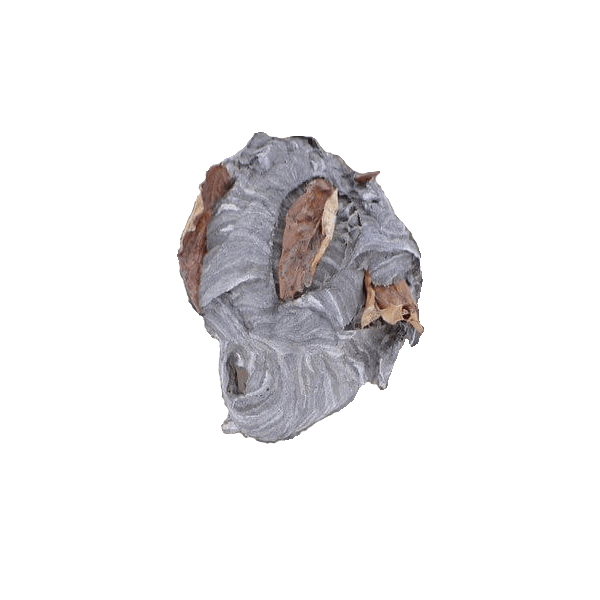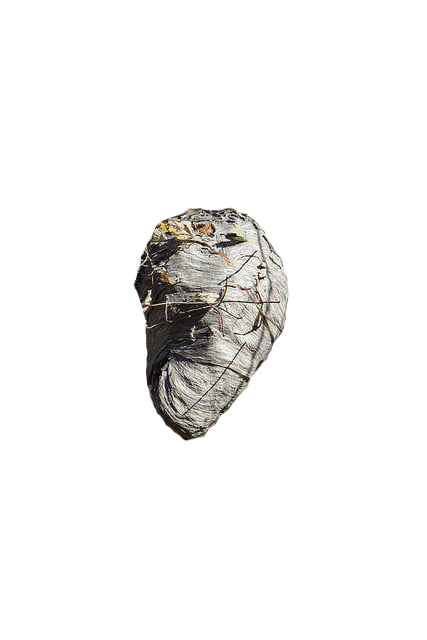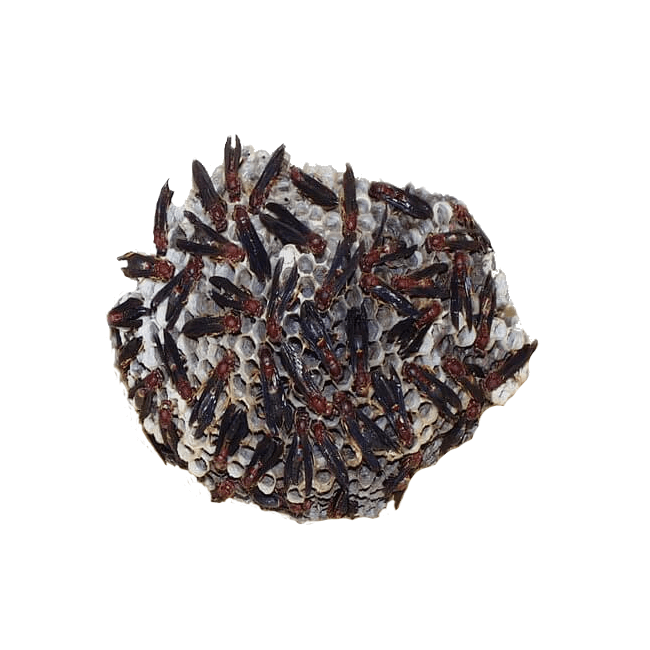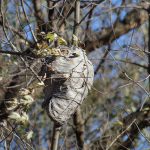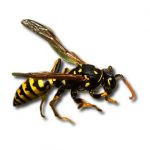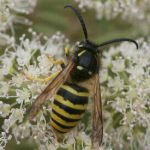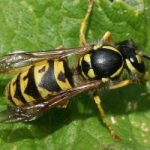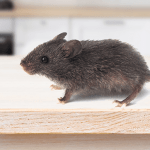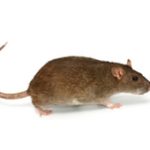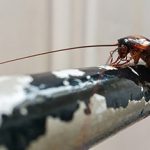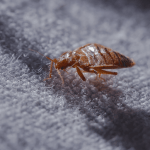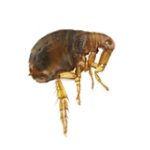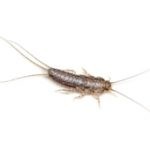Wasp Nests – How to Locate and Identify Them
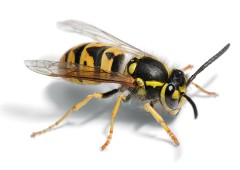 The majority of wasps are solitary insects. However, there are some that prefer to live together. In fact, the species populating the U.K are actually social wasps.
The majority of wasps are solitary insects. However, there are some that prefer to live together. In fact, the species populating the U.K are actually social wasps.
Eusocial wasps live together in a nest. Eusociality means that there are groups in the nests, consisting of worker wasps, that are not reproducing, reproducing cast and an egg-carrying queen.
All social wasps build their nests out of some form of fibre. Wasps chew wood and plant fibres to mix them with their saliva in order to make a construction material for their nests. This material has a paper-like structure. The placement of the nest depends on the type of wasp.
The nests are constructed of rows of cells, resembling those of bees. Wasps lay their eggs in those cells. Later, the larvae will be kept and fed in the same cell until they develop into a mature wasp.
Identifying a Wasp Nest
If there is a nest of social wasps on your property you will notice a vast increase of wasps. In order to find their home, you can simply follow the wasps from a safe distance. There is no way for you to miss the stream of scouting and working wasps leaving and entering the nest. Remember, don’t get too close! Bear in mind that wasp species like to nest in huge cracks. Nests could be under your porch or in a crack between your roof and the walls of the house. Nests in cracks, especially on the roof, can potentially lead to an entry point to your home.
While following the wasps, keep in mind that they are extremely aggressive, especially when it comes to their nest!
Need a wasp control for your home or business?
Book professional wasp treatment and have a specialist to take care!
Call us
How To Identify Wasp Activity Around Common Nesting Spots
Common nesting spots for wasps in close proximity to human dwellings are:
- Cracks in Buildings
- Under Roofings
- Garden Sheds
- Garages
- Deep Bushes
- Under Patios
Some wasps even make nests underground like the German Wasp and the Red Wasp.
You can identify activity by keeping an eye out for the “traffic” of worker wasps. Wasps will go back and forward, carrying food to the hive during the day. You can’t miss that, and it will help you determine where exactly is the entrance of the nest. Another sign of a wasp nest nearby is the constant buzzing sound. When the insects, group in bigger quantities the sound is unmistakable. Be very careful if you spot a hole in the ground in your garden. Always stand aside and observe before tempering with the soil around the hole. Those openings might be the entrance to an underground German wasp nest.
Sure Sign
If you see fresh stripes on wooden surfaces, that is a clear sign of wasp activity. Perhaps you’ve noticed thin white lines on the tool shed or wooden fence. Those lines are formed while wasps are collecting the wood fibre for building their nest. By striping a line of fibre they reveal the hidden surface of the wood, that is not weathered by the sun, and you can see it with a naked eye.
That is a sure sign of a wasp nest being constructed nearby.
Check also: What is the First Thing You Should Do If You See Signs of Pest Infestation?
Difference Between a Wasp Nest and a Bee Hive
Although wasp nests and bee hives have some similarities, there are some differences. You need to know what you are dealing with because bees are a protected species and tempering with their hives is against the law.
| Building Material | Preferred Location | Size of Nest |
| Bees | Wax like substance created by the bee itself. Also known as beeswax, bees are creating with their abdomens. | South facing hive with an entrance not bigger than an inch and a half in diameter. | Big enough to collect 6 and a half gallons. |
| Wasps | Paper-like substance created by mixing plant fibre and saliva while chewing. | Covered nest, somewhere out of sight. One entrance at the bottom of the nest. | Size varies. The biggest nest reported was 1.75 metres in diameter and 3.7 metres in height. |
Having a wasp colony in your property?
Book wasp extermination and let the experts resolve the issue!
Call us
How Many Wasps Live in a Nest
The number of wasps housed inside the nest varies again with the specific type of wasp. Another factor is if the nest turned into “polygynous” or not. If it is, it will be inhabited by more than one egg carrying queen and may live through the winter and grow, even more, next season.
In the UK, the most common wasp in urban areas is the German Wasp (Vespula germanica), whose nests can house around 1000 individuals. That number can go up to 1500 individuals, although the phenomenon is rare. Most of the nests house around 600 – 800 wasps.
Red wasp, also populating the UK rural areas, are the wasps that build some of the biggest nests. A red wasp nest usually contains 3000 – 5000 wasps. Be extremely careful not to strike those nests if you are not ready for war. It’s not easy to get rid of wasp nests.
Will a Wasp Nest Disappear on Its Own
Wasp colonies usually don’t live through the winter, because of low temperatures and lack of food. So if the nest is not bothering you in any way and you just leave it be, it will grow by the end of summer and die off in the winter. So to answer the “evergreen” question: “How long does a wasp nest last?” We can safely say: “Usually, one year”. However, an egg-laying queen may be hibernating inside and waiting for the weather to warm up in order to restart the life in the nest. Those would be “polygynous” nests. Queen wasps have an average lifespan of 12 months, but we are talking about the duration of a nest, and a single nest can have multiple queens. On top of that, after a queen dies, a younger one takes her place.
Even if there are no queens left in the nest, the very construction could be repopulated next year. So as long as the wasp nest is present, they may be wasps inside and probably will be.
If a nest is removed from a specific location, wasps from the same colony will not return to that spot again. Unfortunately, if the perfect conditions for nesting are present, a new colony could re-establish itself on the same spot. If you have re-occurring problem with wasps nesting near your home, you should seek a professional wasp nest removal to fix the problem.
In some rare cases, wasp predators take away entire nests. These rare cases are mostly doing of racoons (slightly possible) and weasels. And on super rare occasions birds like the magpie or the blackbird. Those are all-natural predators of the wasp that enjoy the taste of adult wasps and are not tempted only by its larvae.
Disclaimer
As a commercial service provider we only aim to inform you about wasps nests according to the professional experience of the pest technicians. However, we cannot guarantee that the above-mentioned nesting spots are the only one.
Read more



 The majority of wasps are solitary insects. However, there are some that prefer to live together. In fact, the species populating the
The majority of wasps are solitary insects. However, there are some that prefer to live together. In fact, the species populating the 